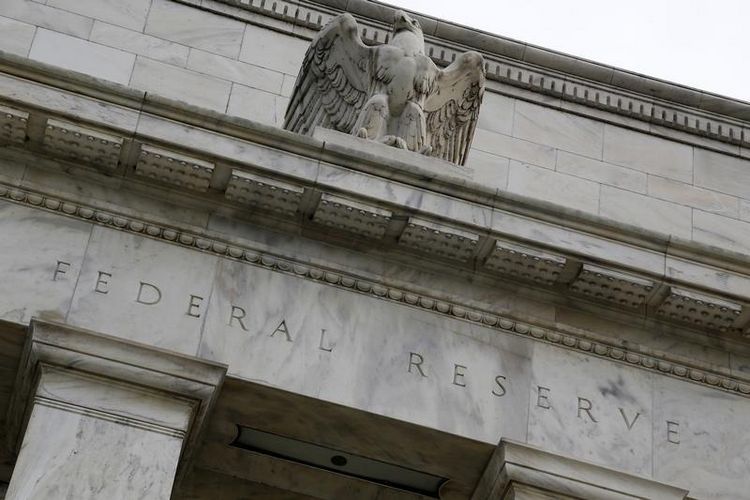From where I sit, it is 75 miles to Canary Wharf and 3,375 miles to Wall Street and yet, at 1:30pm GMT and 07:30 EST on Friday I thought I could hear the collective “Ooohs!” and “Ahhhs!” which rose from the trading floors as the Department of Labor’s monthly job report hit the screens. Talk of knocking the cover of the ball!
Consensus forecast had been for an increase in the October Nonfarm Payroll of 185k, of Private Payrolls of 169k, for hourly earnings to rise by 0.2% MoM and by 2.3% YoY. In the event, the numbers read 271k, 268k, 0.4% and 2.5%, respectively. The unemployment rate met expectations at 5.0%, down from 5.1% in September but the fly in the ointment, if there were one, would have had to be the unchanged Labor Force Participation Rate at 62.4%.
If the Federal Reserve is looking for any excuse to reverse its now generally acknowledged error of failing to move at its September meeting and to begin the long anticipated tightening cycle in December, there’s not much more than this which it will be needing. Along with the vast majority of observers, I have been vacillating when it has come to pinning the tail on the rate hike donkey, albeit less because I misread the economy than because I couldn’t keep up with the way the Fed was thinking, not least of all because of FOMC’s members’ inability to either follow a party line or to keep their own council. Listening to them is just like facing a bunch of schoolboys when trying to elicit which of them kicked the ball which broke the window, or who threw the dead mouse into the girls’ changing room.
Anyhow, at the stroke of a pen – or flash of a screen – the slight possibility of a December tightening became a strong probability and bond and currency markets reacted accordingly. The 2-year note shot from a yield of 0.825% to 0.92 in a single tick but then settled later in the day around 0.90%. The intermediate sector was less stable with a knee-jerk print in 10-years jumping from 2.22% to 2.30% but rather than settling better, the 10s continued to trade weaker, closing at 2.325%. The 10s/30s remained stable as the long bond also ended about 12bp higher at 3.09%. This is still well below the recent yield highs of June and July but it does look as though fixed income markets are girding their loins for the reversal of that great decade of low rates.
Equity markets, never good at judging macro economics, once again couldn’t decide whether the celebrate the strength in the economy or to panic over the impending rise in the cost of funding all those borrowings used to finance share buy-backs. In the end, they did a fantastic impression of a rabbit in the headlights with the Dow rising a bit and the S&P selling off a bit. I think we can call that a draw.
The dollar, quite inevitably, rallied hard closing at €1.0755 and at US$1.5050 to the pound which protected European stocks and had the Dax, the principal beneficiary of a weak euro, close 100pts of just under 1% higher. Overnight, the Nikkei had the same warm and fuzzy feeling and is, at the time of writing, close to 2% higher on the day.
Commodity prices remain fairly weak and oil which closed back below US$45.00 (WTI) on Friday will today have to digest the news that Saudi Arabia has no intention of scaling back its output. It has liabilities to meet and meet them it will. I suspect the news had already been discounted by markets before it was announced as I would be very surprised if this had not been expected and long priced in by the hydrocarbon community. Maybe the time to trade the opposite of buy on rumour, sell on fact?
The axe
Other key news over the weekend included the pre-announcement that Unicredit, the last bank in Italy with anything approaching international standing, is to cut 12,000 jobs which adds up to around 10% of its workforce. Prompted by some of the industry’s poorest revenues and profits and a cost/income ratio of 80%, management has decided to take the back axe to the cost base.
The lack of profitability is placing stress on its already relative anaemic capital and reserves and unless something happens on that front, and pretty pronto, regulators will want to see it raise more capital which would further dilute its mangy performance. Many would argue that the place is so complicated and inefficient that 12,000 less people will barely impact its output.
Part of the plan is to sell the retail arm of its Austrian subsidiary, BankAustria to BAWAG, which will be remembered by many for its questionable dealings in the hedge fund world which were double trouble as it had been the banking arm of the Austrian trades unions. Who can remember Wolfgang Floettl, son of the then chairman Walter, and his Ross Capital? Who can forget the collapse of Refco? Word is also of a possible de-consolidation or disposal of Pioneer, its powerful asset management group. Capital, capital, my kingdom for more capital!
Another BRIC in the wall
Finally, our friends at Bloomberg News picked up over the week-end on the surreptitious merging of GSAM’s BRIC Equity Fund with its existing emerging market investment vehicles. Jim O’Neill, now Lord O’Neill, was Chief Economist at Goldman Sachs International (and went on to be Chairman of GSAMI) when he created the acronym BRIC – South Africa was later added to Brazil, Russia, India and China. Seeing his old shop folding the BRICS back into the general emerging market pot verifies my old contention that the leopard never changes its spots.
That said, hasn’t the time come to take China, the world’s second largest economy, entirely out of the EM space? It is of course entertaining to watch all those who were so enthusiastic for the BRIC thing suddenly discover that the constituent economies differ by more than they ever had in common, and that trying to squeeze them into one box was, didn’t we know that all along, always a questionable trade.
So there we go into the new, post October Payroll world and where will it take us? My guess is for risk assets to begin to soften during the week while issuers in the corporate bond space will be lighting the rocket engines to get in there while the going is still good. Expect some hurried jumbo issuance – that by definition is now a deal with an aggregate size of above US$10 billion although I still remember a US$500 million bond being termed a jumbo – with spreads mildly wider and looking relatively attractive in the current context. How clever that will look in six months time will probably depend on whether you are the issuer or the investor.

